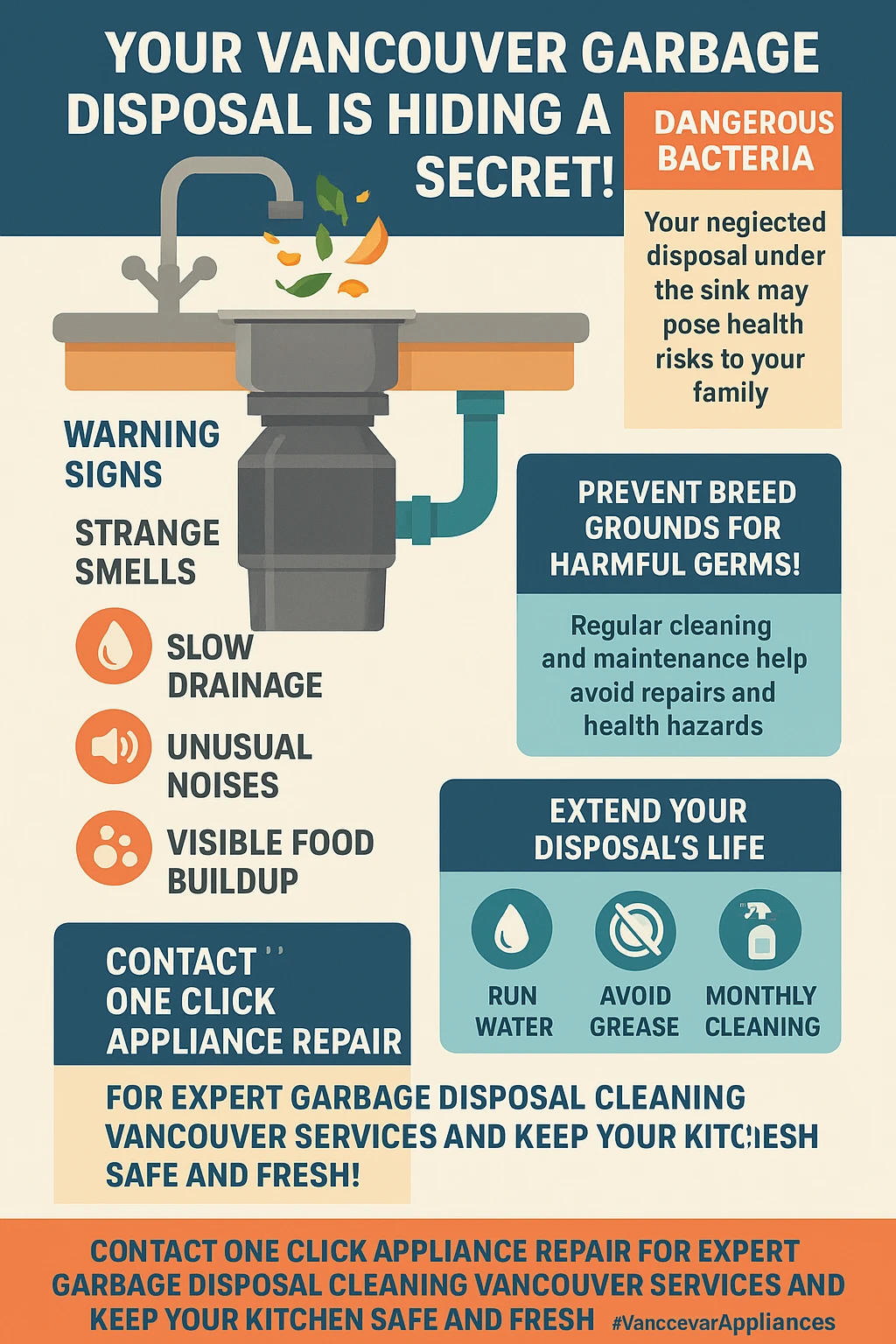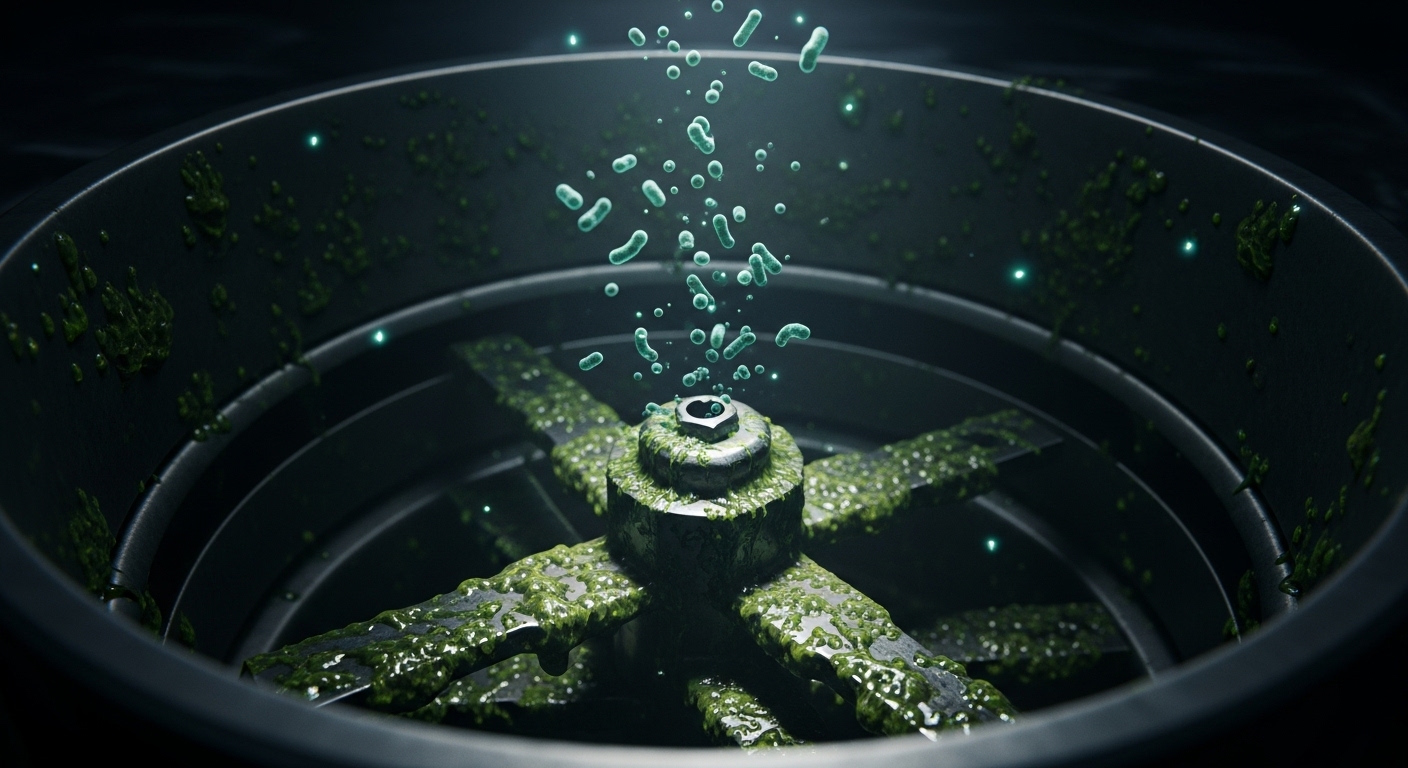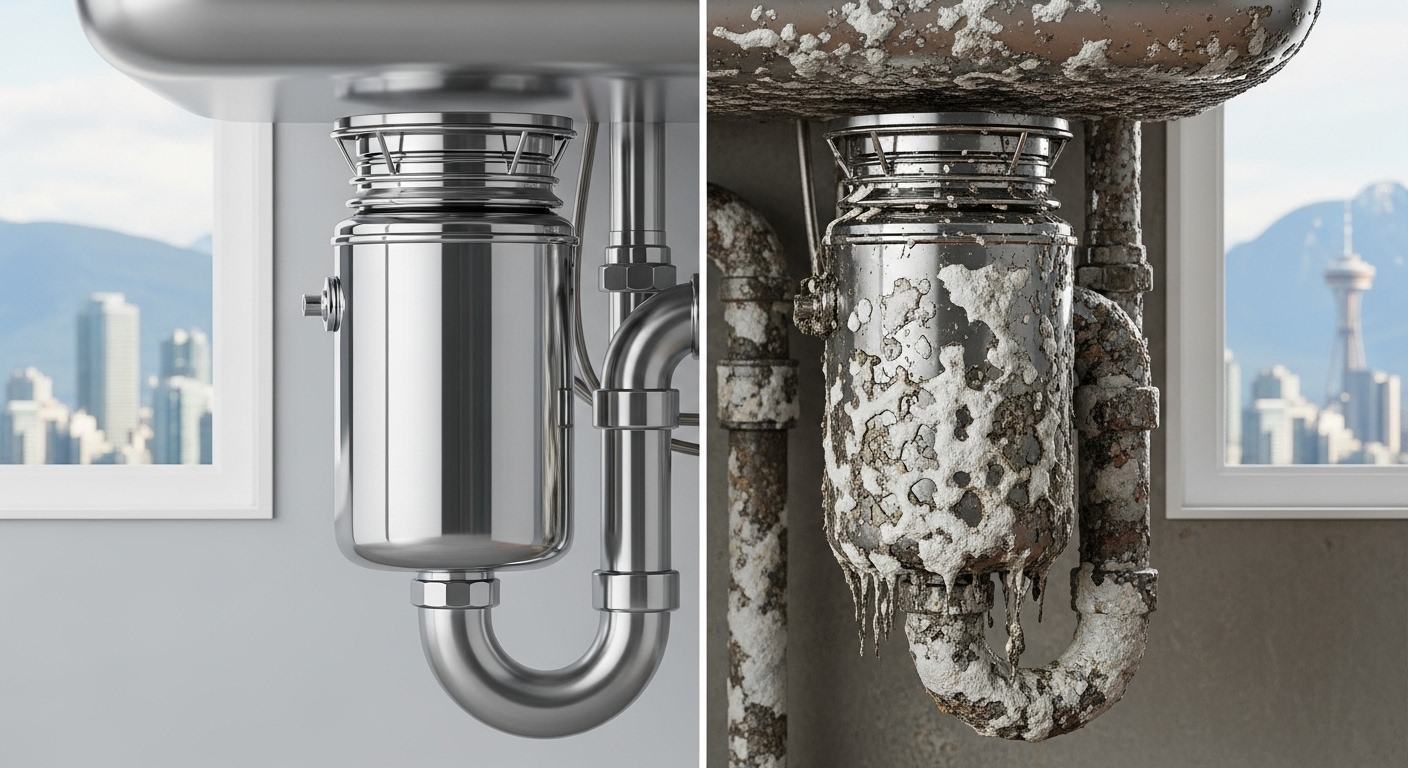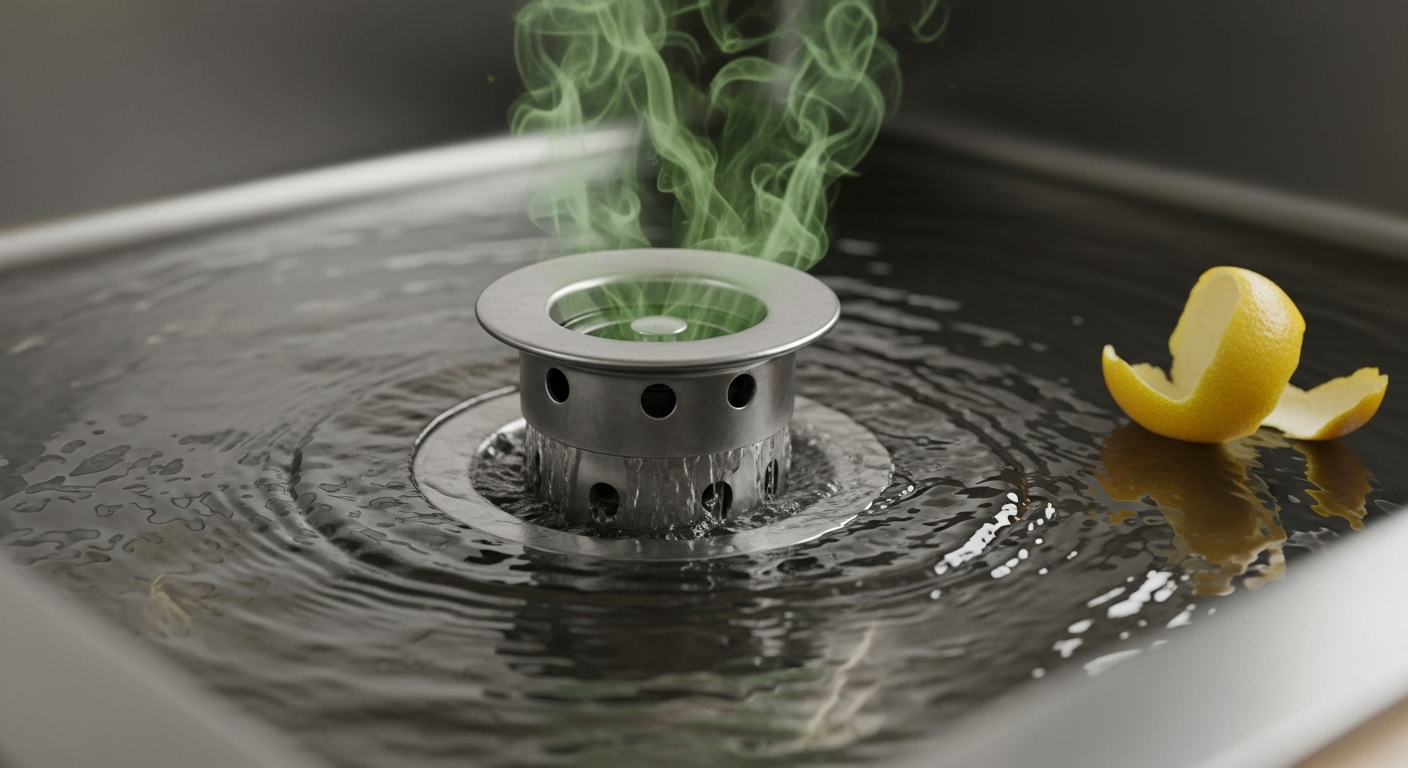Vancouver’s Most Neglected Appliance: Why Your Garbage Disposal is a Health Hazard (and How to Save It Before It’s Too Late)
Shocked to discover that your kitchen’s “convenient” garbage disposal could be harboring more bacteria than your toilet seat – and creating serious health risks for your Vancouver family? We’re diving deep into the hidden dangers lurking in your disposal unit and revealing why Vancouver’s unique water conditions make this problem even worse than you think.
Picture this: you’re washing dishes after a cozy family dinner, scraping leftover bits down your garbage disposal like you always do. The motor hums, the water swirls, and everything seems fine. But beneath that innocent grinding sound, something sinister is brewing. Your disposal has become a bacterial breeding ground that’s pumping dangerous microorganisms directly into your kitchen air – and you don’t even know it.
Here’s the truth nobody talks about: garbage disposals are one of the most neglected appliances in Vancouver homes, yet they’re also one of the most dangerous when not properly maintained. The combination of food waste, moisture, and Vancouver’s hard water creates a perfect storm for bacterial growth that can seriously impact your family’s health. But here’s the good news – once you understand what’s really happening in that disposal unit, you can take simple steps to eliminate these health hazards and turn your appliance into the safe, efficient tool it was meant to be.
Most Vancouver homeowners treat their garbage disposal like a magical black hole that makes kitchen waste disappear forever. They dump everything from coffee grounds to grease down there, run some water, flip the switch, and assume all is well. This couldn’t be further from the truth. Your disposal isn’t just grinding food – it’s creating an ecosystem of bacteria, biofilms, and potentially harmful pathogens that can affect everything from your respiratory health to your family’s overall wellbeing.
Key Outtakes:
- Garbage disposals can harbor over 500,000 bacteria per square inch – significantly more than toilet seats – creating serious health risks when neglected
- Vancouver’s hard water accelerates bacterial buildup and appliance deterioration by up to 30% compared to softer water regions
- Regular maintenance with natural cleaning methods can extend disposal life by 8-15 years while eliminating health hazards
- Professional inspection should occur annually, with DIY maintenance performed weekly to prevent dangerous bacterial growth
- Improper disposal use creates airborne bacteria that can cause respiratory problems and other health complications

The Hidden Health Hazards Lurking in Your Disposal

Let’s start with the most shocking revelation: your garbage disposal is likely one of the dirtiest places in your entire home. Recent studies show that kitchen sinks can contain over 500,000 bacteria per square inch – that’s more than your toilet seat, cutting board, or even your pet’s food bowl. Now imagine what’s happening inside that dark, moist grinding chamber where food particles get trapped and left to decompose.
The problem isn’t just the bacteria count – it’s the types of microorganisms that thrive in these conditions. Food waste trapped in your disposal creates ideal conditions for harmful pathogens to multiply rapidly. These aren’t just harmless kitchen bacteria; we’re talking about potentially dangerous microorganisms that can impact your health in ways you never imagined. When you flip that disposal switch, you’re not just grinding food – you’re potentially releasing these bacteria into your kitchen air.
Research has revealed something even scarier: garbage disposal systems can generate bioaerosols that become airborne and can be inhaled by your family. Studies tracking airborne bacteria found in garbage have shown that these particles can actually affect your cardiovascular health over time. This means every time you run your disposal, you could be exposing your family to bacteria that travel through the air and into your lungs.
The most insidious threat comes from biofilm formation. These are complex communities of bacteria that create protective barriers around themselves, making them incredibly difficult to remove with standard cleaning methods. Biofilm formation in drain systems represents a largely unstudied source of potentially pathogenic bacteria situated dangerously close to your food preparation areas. These biofilms can persist despite chemical cleaning attempts, continuously releasing bacteria into your kitchen environment.
What makes this situation particularly dangerous is that many Vancouver homeowners have no idea their disposal has become a health hazard. The symptoms of exposure – minor respiratory irritation, occasional digestive issues, or general fatigue – are often attributed to other causes. Meanwhile, the real culprit continues grinding away in your kitchen, creating an ever-expanding bacterial colony that affects your family’s health day after day.
Vancouver’s Hard Water Crisis: How Mineral Buildup Accelerates Health Risks

Vancouver’s beautiful mountain water comes with a hidden cost that most residents don’t realize until it’s too late. Our city’s moderately hard water contains elevated levels of calcium and magnesium that create serious problems for garbage disposals beyond simple mechanical wear. These minerals don’t just build up on the metal components – they create perfect surfaces for bacteria to adhere to and multiply.
Here’s what’s happening inside your disposal right now: Vancouver’s hard water conditions force appliances to work 30-50% harder than they would in soft water areas. Every five grains per gallon of hardness causes approximately 0.4 pounds of scale accumulation yearly in water-using appliances. This scale isn’t just reducing your disposal’s efficiency – it’s creating rough, textured surfaces where bacteria can establish colonies that are virtually impossible to remove with standard cleaning.
The mineral buildup acts like a protective coating for harmful microorganisms. While smooth metal surfaces can be cleaned relatively easily, scale-covered surfaces provide countless microscopic hiding places where bacteria can survive even aggressive cleaning attempts. This means Vancouver disposals don’t just get dirtier faster – they stay dirty longer, creating persistent health risks that worsen over time.
Vancouver’s specific water hardness profile falls in the 80-120 mg/L range, which creates a perfect storm for disposal problems. This level isn’t hard enough to alert most homeowners to install water softeners, but it’s definitely hard enough to accelerate both scale formation and bacterial growth. The result is a disposal that appears to be working normally while quietly becoming a significant health hazard.
The financial impact compounds the health risks. Hard water increases energy bills by up to 29% and reduces appliance efficiency dramatically. When your disposal has to work harder to process the same amount of food waste, it creates more heat, more vibration, and more opportunities for food particles to get trapped in mineral deposits. These trapped particles become breeding grounds that pump bacteria directly into your kitchen air every time the unit operates.
Warning Signs Your Disposal is Becoming a Biohazard

Many Vancouver homeowners miss the early warning signs that their garbage disposal has transformed from a helpful appliance into a potential health hazard. The key is recognizing these symptoms before they become serious problems that require expensive repairs or, worse, impact your family’s health.
The most obvious red flag is persistent odors that don’t go away despite your cleaning efforts. If you’ve tried running lemon peels, baking soda, or commercial cleaners down your disposal and the smell returns within a few days, you’re dealing with bacterial colonies that have established themselves deep within the unit. These odors aren’t just unpleasant – they’re literally the smell of decomposing organic matter creating health risks in your kitchen.
Slow drainage represents another serious warning sign that most people dismiss as a minor inconvenience. When water backs up in your sink or drains sluggishly, it creates stagnant conditions that are ideal for bacterial growth. This standing water becomes a breeding ground where harmful microorganisms multiply rapidly and then get dispersed throughout your kitchen when you finally run the disposal.
Pay attention to unusual noises coming from your disposal. While some grinding is normal, loud, metallic clanking can indicate that internal components are damaged or that hard mineral deposits have broken loose. These damaged areas create even more crevices for bacteria to hide and thrive. Similarly, frequent resets or shutdowns are a cry for help. It means the motor is overheating, often due to excessive strain from hard water scale and food buildup, which again points to an unhealthy, bacteria-ridden interior.
Frequently Asked Questions
How often should I clean my garbage disposal?
For optimal hygiene and performance, you should perform a light cleaning at least once a week and a deep cleaning once a month. Weekly cleaning can involve grinding ice cubes followed by citrus peels. Monthly deep cleaning should use a mixture of baking soda and vinegar to sanitize the unit and break down stubborn buildup.
What should I never put down my garbage disposal?
Avoid fibrous vegetables (celery, corn husks), starchy foods (potato peels, pasta, rice), grease, oil, coffee grounds, and bones. These items can clog the unit, dull the blades, and create a sticky residue that traps other food particles, accelerating bacterial growth.
Can a dirty garbage disposal really make my family sick?
Yes. A dirty disposal can harbor harmful bacteria like E. coli, Salmonella, and Listeria. When the disposal runs, it can aerosolize these bacteria, sending them into the air you breathe and onto your kitchen surfaces. This can lead to respiratory issues, foodborne illnesses, and other health complications, especially for children, the elderly, or those with compromised immune systems.
Why is my garbage disposal draining so slowly?
Slow draining is usually caused by a clog in the P-trap or the drain line connected to the disposal. This is often a result of improper food waste (like grease or coffee grounds) combined with hard water mineral deposits, creating a thick sludge that restricts water flow and creates a perfect breeding ground for bacteria.
Is it worth repairing an old garbage disposal?
If your disposal is under 8 years old and the issue is a simple clog or a minor mechanical problem, a repair is often cost-effective. However, if the unit is older, frequently clogs, has persistent odors despite cleaning, or shows signs of a leak from the main housing, replacement is typically the better and safer option.
Wrapping Up
Your garbage disposal is more than just a convenience; it’s an appliance that directly impacts the health and safety of your kitchen environment. By understanding the unique challenges posed by Vancouver’s hard water and the hidden dangers of bacterial growth, you can move from neglect to proactive maintenance. Regular cleaning, proper usage, and timely professional inspections aren’t just about extending the life of your appliance—they’re about protecting your family’s health.
Don’t wait for foul odors or a major breakdown to signal a problem. Take control of your kitchen’s hygiene today. A few simple steps can transform your garbage disposal from a hidden health hazard into the safe, efficient tool it was designed to be, ensuring your Vancouver home remains a healthy place for your family.



